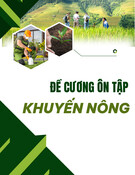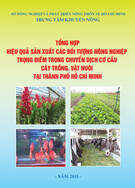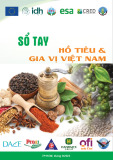
Int.J.Curr.Microbiol.App.Sci (2020) 9(4): 1185-1195
1185
Review Article https://doi.org/10.20546/ijcmas.2020.904.140
Optimum Use of Nonmonetary Inputs for Sustainability in Agriculture
Urjashi Bhattacharya1*, Smritikana Sarkar2 and Pintoo Bandopadhyay3
Department of Agronomy, Bidhan Chandra Krishi Viswavidyalaya,
Mohanpur, Nadia-741252, West Bengal, India
*Corresponding author
A B S T R A C T
Introduction
Agriculture along with its allied sector, is the
largest source of livelihood in India.70% of
rural household depends on agriculture as
their primary occupation of which 82 % of
farmers are small and marginal (FAO,2019).
Intensive cultivation has already
compromised the sustainability of the agro-
ecosystem and uncertainties of climate now
days calls for changes in the input intensive
practices in agriculture.
So focus on alternative approaches to feed
ever increasing population should be such that
it can combat poverty and climate change
hand in hand along with improving the
sustainability of the system. The use of non
monetory inputs by the poor farmers can be
quite the most feasible, eco-friendly and
climate smart option to preserve the
environment and safeguard the natural
resources of agro-ecosystems which has
almost become mandatory
Non monetory inputs are those locally
adaptable cultural operations which helps in
getting more yield without any extra cost and
the cost never change with the level of output.
Some of the non-monetory inputs are:
International Journal of Current Microbiology and Applied Sciences
ISSN: 2319-7706 Volume 9 Number 4 (2020)
Journal homepage: http://www.ijcmas.com
Natural resources are being consumed at an alarming rate, and the capacity
of resources and technologies to satisfy food demand for the growing
population remains uncertain. Since agriculture along with its allied sector,
is the largest source of livelihood in India having 70% of rural household
depending on agriculture as their primary occupation of which 82 % of
farmers are small and marginal (FAO, 2019), the use of non monetory
inputs by the poor farmers can be quite the most feasible, eco-friendly and
climate smart option to preserve the environment and safeguard the natural
resources. Non monetory inputs are that locally adaptable cultural operation
which helps in getting more yield without any extra cost and whose cost
never change with the level of output.
K e y w o r d s
Conservation,
Environment,
Agro-ecosystem,
Sustainability,
Non-monetory
Accepted:
10 March 2020
Available Online:
10 April 2020
Article Info

Int.J.Curr.Microbiol.App.Sci (2020) 9(4): 1185-1195
1186
Conservation tillage
Sowing
Plant population
Organic mulching
Choice for crops
Pest and disease management
Weed management
Advisory support
Use of non-monetory inputs is important for
agriculture because:
1. The first green revolution in the 1960’s was
aimed to increase the agricultural
productivity with higher levels of inputs
like fertilizers, pesticides, use of farm
machinery etc.
2. No doubts with excessive levels of these
inputs we have achieved the objective
to feed our ever increasing population
which is expected to hit 9.7 billion in
2050 (FAO, 2019) but in the process for
short term improvement various forms
of ecological stresses like loss of
biodiversity in agricultural lands,
salinization, alkalization, nitrate
pollution in groundwater, pesticide
residues in food etc. have aggravated
the situation more.
3. Intensive or high input agriculture uses
higher levels of machinery, chemicals,
labour, capital etc to maximise produce.
Hence affecting environment in
multiple ways like:
-Soil and water pollution due to
excessive use of chemicals and
fertilizers.
-Heavy use of pesticides killing
beneficial organisms and affecting
biodiversity of the ecosystem.
- Soil erosion and land degradation due
to use of heavy machinery and tillage
implements.
- Exploitation of fossil fuels for various
cultural operations and adding to
greenhouse gases.
4. So new alternatives for agricultural
production which would integrate both
biological and ecological processes in
the wake of devastating climate change
should be the urgent need of the hour.
5. Due to intensive cultivation the inherent
capacity of land to produce more has
been disrupted and natural resources
like soil, water etc has been exploited to
a dangerous level.
6. The use of costly external inputs should be
minimized and substituted by optimum
non monetory inputs which uses the
knowledge and skills of farmers and
manipulate the agro-ecosystem in such
a way so that it can address the energy
flow, nutrient cycling and resilience of
the entire system as well as maintain
system productivity in the long run
(Pretty, 2008).
Sustainable agriculture is the efficient and
profitable production of high quality food and
fibre in a way that protects and improve the
natural environment, social and economic
conditions of farmers and their local
communities while safeguarding the health
and welfare of all farmed species so as to
ensure the attainment and continued
satisfaction of human needs for present and
future generations.
The production system is called sustainable if
outputs of all products harvested are balanced
by inputs back to the system.
Non-monetory inputs
Conservation tillage
Due to late onset of monsoon nowadays
kharif crops like rice is being late sown which
leads to late harvesting and hence causing a
very short turnover period for sowing of next
rabi crop like wheat, lentil etc and thus
hampering their yield drastically (Singh and
Kaur, 2012).

Int.J.Curr.Microbiol.App.Sci (2020) 9(4): 1185-1195
1187
When cropping intensity in a year is increased
less time for land preparation between two
crops makes it mandatory for farmers to go
for conservation tillage practices. For eg:
Kharif paddy (July/August- October/
November) - Lentil (mid October/Mid
November- late February/early March)-
Summer Maize (late February / March-
May/June).Here very little time is obtained
for land preparation for lentil and maize
sowing. Conventional tillage not only
increases the cost of cultivation but also
causes (Hobbs et al., 2008) soil erosion and
degradation; reduced soil fertility, water-
holding capacity, soil biological activity and
contributes to greenhouse gases.
In short it has a negative impact on soil
environment and its sustainability. Therefore
in order to reverse the trend of natural
resource degradation focus should be on
resource conserving technologies like
conservation tillage.
Conservation tillage: According to CTIC (The
Conservation Tillage Information Centre,
1990 and 1995) “Any tillage or planting
system that maintains at least 30% of the soil
surface covered by residue after planting to
reduce water erosion or where wind erosion is
a primary concern, maintain at least 1000
kg/ha of flat, small grain residue equivalent
on the surface during the critical wind erosion
period”.
Due to different conservation tillage practices
following benefits are observed :a)Better
aggregation and pore size distribution was
observed in case of zero tillage (Bhattacharya
et al., 2006); b) Better soil structure resulting
in more water stable aggregates reduces soil
crusting and erosion by allowing water and air
to enter the soil thereby improving
germination and seedling establishment (Lal
et al., 1994); c) Water infiltration rate was
higher in parmanent beds and zero tillage
system than the conventional tillage. (Jat et
al., 2009); d)Up to eight fold increase in
hydraulic conductivity in zero tillage stubble
retained have been reported over treatments
where stubble was removed by burning
(Valzano et al., 1997); e)Conservation tillage
practices with crop residues on soil surfaces
reduces evaporation rate and conserves soil
moisture (Prihar et al., 1996); f)Accumulation
of crop residues in the soil under zero tillage
and minimum tillage results in more organic
matter content and thereby improving the
fertility of the soil; g) Highest soil respiration
activity, soil dehydrogenase activity , and
microbial biomass carbon has been observed
in conservation tillage treatments as reported
by Sharma et al., (2011) and Yeboah et al.,
(2016). Soil flora and fauna is responsible for
stabilizing the soil structure and it’s been
reported to increase in the long term if
conservation tillage is being practised (Singh
et al., 1994). Moreover conservation tillage
practices saves time, labour, fuel and reduces
the cost of cultivation.
Sowing
Sowing time
Optimum sowing time have considerable
effect on yield and productivity of crops.
Different sowing time provides different
environmental conditions like temperature,
precipitation etc. which might not be
favourable for the growth of a particular crop.
So appropriate sowing time is important for
ensuring good germination, timely appearance
of seedling and better root development
(Ganvit et al., 2019). Optimum sowing time
varies according to crop, variety, agro-
climatic zones etc. It is well known that if
sowing of wheat is delayed beyond 25th of
November the yield reduction is expected to
be 30 kg/ha/day. (Directorate of Wheat
development). Correct age of seedlings
should be used for transplanting. For e.g. – 3-

Int.J.Curr.Microbiol.App.Sci (2020) 9(4): 1185-1195
1188
4 weeks old seedling for short duration rice.
5-6 weeks old seedling for long duration rice.
A difference in sowing date has relatively
improved the yield and yield attributes of
wheat as reported by Singh et al., (2016).
Sowing depth
Optimum sowing depth is needed for good
crop stand and higher yields (Ali and Idris,
2015).It has been reported by Alam et al.,
(2014) that differences in sowing depth has
significantly improved the yield components
of wheat. Depth of sowing varies with -
1. Crop: Optimum depth for most field crops
is 3-5 cm but it varies from crop to crop. Like:
Rice -3-4 cm, Maize-5-6 cm, Wheat-5-6 cm,
Pearlmillet-2-4 cm.
2. Soil type: In sandy soils deeper sowing,
whereas in heavy soil shallow sowing is
recommended.
3. Moisture availability: In dryland condition
crops should be sown in deeper layers.
4. Seed size: Bold seeded crop should be
sown deeper (upto 10cm), small seeded crop
should be sown upto (3-4 cm).
Plant population
Plant population is the total number of plants
growing per unit area. Plant population has
significant effect on growth and yield of
crops. Plant population should not be so much
higher that there is intraspecific competition
for nutrients, soil moisture, light, etc. so that
yield per unit area of the crop is hampered.
Likewise it shouldn’t be too low to achieve
economic yield.
For indeterminate plants which are highly
branching or tillering like rice, wheat etc
higher plant population causes yield reduction
due to reduction in number of seeds. For
determinate plants which are non-branching
and non-tillering like maize, sorghum the
yield reduction is due to reduction in size of
ears. For better crop stand, uniform growth
and maturity, and finally for maximising yield
optimum plant population is the main factor.
To maintain optimum plant population
following approaches should be taken: a)
Preparation of proper seed bed; b)
Arrangement of rows and beds; c)
Maintenance of row spacing; d)Accurate
planting time and methods; e) Seeds of good
quality and health; f)Ensuring maximum
germination percentage. It has been reported
that uniform plant stand always have yield
advantage than non-uniform plant stand
(Caliskan et al., 2004).
Though a generalized optimum plant
population can’t be recommended since it
depends on crops and their spacing, seasons,
agro-climatic zones, soil fertility, water
availability etc., Abuzur et al., (2011)
reported there was difference in physiological
parameters of maize according to difference
in plant population.
Organic mulching
Technical term of mulch means’ covering of
soil’. Mulching is a practice of covering the
soil or ground for soil and water conservation,
in the process creating favourable conditions
for plant growth, development and crop
production. (Sharma and Bharadwaj, 2017)
Any locally available organic substance
present in the field like dried leaves, straw,
previous crop residues, stubbles, etc can be
used by farmers for mulch purposes. These
are eco-friendly as well as cost-effective.
Research results have shown that mulch plays
an important role in improving physical,
chemical and biological properties of the soil.

Int.J.Curr.Microbiol.App.Sci (2020) 9(4): 1185-1195
1189
The benefits of organic mulching are as
follows: - Mulching helps in regulating the
soil temperature. It has been reported that
plant residues acting as mulch can reduce soil
temperature by 8°C (Krenzer et al., 1987).
Different research results have shown that
organic mulches covering the soil surface
improves soil moisture by reducing
evaporation, improving water infiltration and
enhancing water retention capacity of soil
(Lal, 1974). It was reported that soil moisture
in mulched plots was not only higher but
stable during the entire vegetation period
(Sinkevičienė et al., 2009).
Water holding capacity of soil is increased
due to organic mulches decomposition and
humus formation (Ji and Unger, 2001).
Teame et al., (2017) have found that there are
differences in soil moisture content
availability owing to different soil depths
after sowing.
High soil cover reduces surface runoff
allowing more time for the rainwater to
infiltrate. Hatfield et al., (2001) has reported
there is a reduction of 34%-50% in soil water
evaporation due to crop residue mulching.
Soil structure is improved due to presence of
decomposed residues and humic substances in
the soil which causes formation of better
aggregates in soil thereby reducing
compaction (Ibeawuchi et al., 2015).
Weed growth is suppressed by mulching since
mulched layer excludes light. Without higher
sunlight, young weeds cannot produce sugars
needed for growth and ultimately die. Since
some weed seeds require light in order to
germinate, so mulch can also prevent
germination. It has been shown that residues
of small grains inhibit weed emergence and
growth in cropping systems by allelopathy
(Putman, et al., 1983, Blum, et al., 1997).
Organic mulching promotes soil fertility and
soil health by acting as a source of all
essential major and minor nutrients. Due to
decomposition of organic mulches microbial
activity is stimulated and thereby increasing
soil organic matter and enhancing the
availability of nutrients in the soil. (Kumar et
al., 2017)
On overall organic mulching improves plant
growth, increases yield and productivity of
crops by sustaining the quality of soil.
Choice of crops
Choice of crops should be done in such a way
so that it can maintain ecosystem diversity,
fertility, resilience and at the same time
enabling farmers to yield remunerative crops
throughout the year. For example:
Monocropping should be completely avoided
as it exhausts the soil fertility. Moreover
autotoxicity in monocropping can be observed
in crops like alfalfa, rice, pigeonpea,
sunflower etc . This occurs due to allelopathic
effect exhibited by accumulation of
phytotoxins of root exudates and
decomposing plant residues and
multiplication of harmful pathogens in soil.
(Narwal et al., 1998)
At least one leguminous crop should be
incorporated in a cropping system so as to
improve the soil fertility.
Exhaustive high feeding crops like rice,
potato should be followed by restorative crops
like cowpea, greengram, blackgram etc,
Perennial and long duration crops like
sugarcane should be followed by seasonal
crops like greengram, groundnut etc.
Deep rooted crops like cotton, should be
followed by shallow rooted crops like lentil,

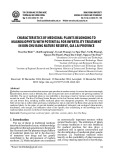
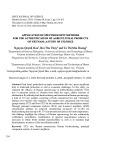
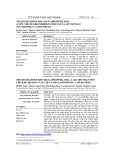
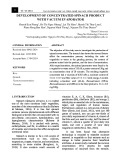
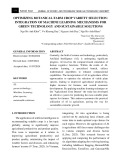
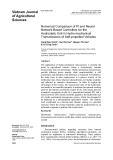
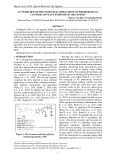
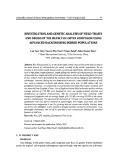
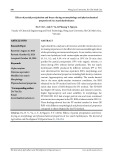
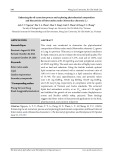


![Bài tập Nông nghiệp đại cương [nếu có thêm thông tin về loại bài tập, ví dụ: trắc nghiệm, thực hành,... thì bổ sung vào]](https://cdn.tailieu.vn/images/document/thumbnail/2025/20251124/stu755111075@hnue.edu.vn/135x160/57241763966846.jpg)



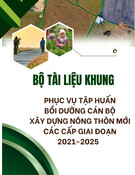
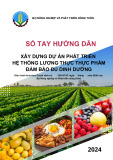
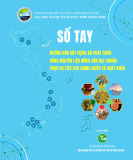
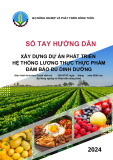
![Hướng dẫn thực hiện khóa đào tạo nghề Kinh doanh nông nghiệp [chuẩn nhất]](https://cdn.tailieu.vn/images/document/thumbnail/2025/20251114/kimphuong1001/135x160/9931763094163.jpg)
![Biến đổi khí hậu và ảnh hưởng tới nông nghiệp: Tài liệu [mới nhất/quan trọng/chi tiết]](https://cdn.tailieu.vn/images/document/thumbnail/2025/20251107/kimphuong1001/135x160/23061762507164.jpg)
